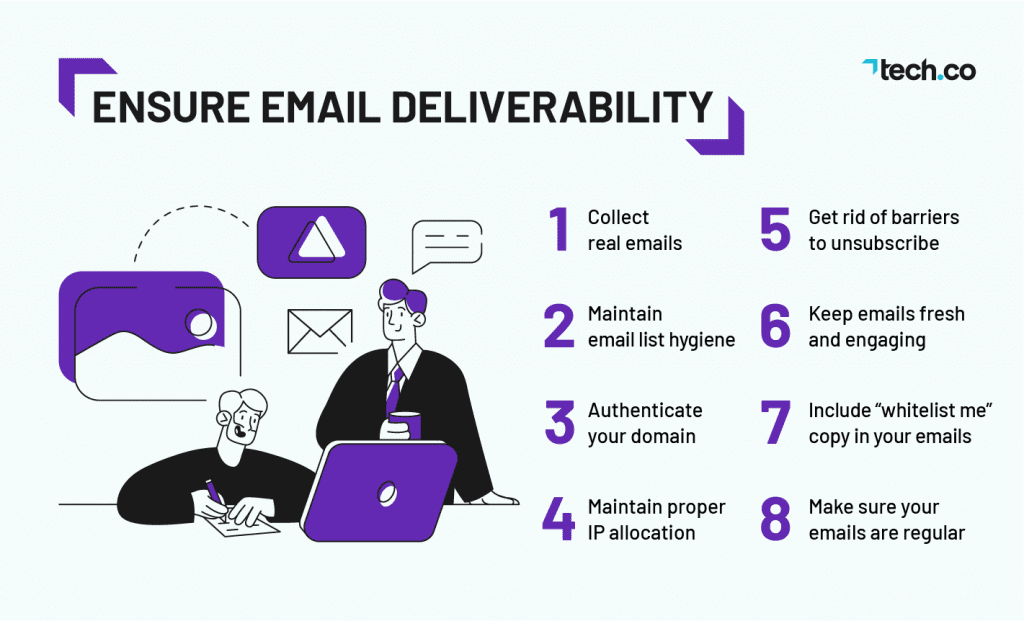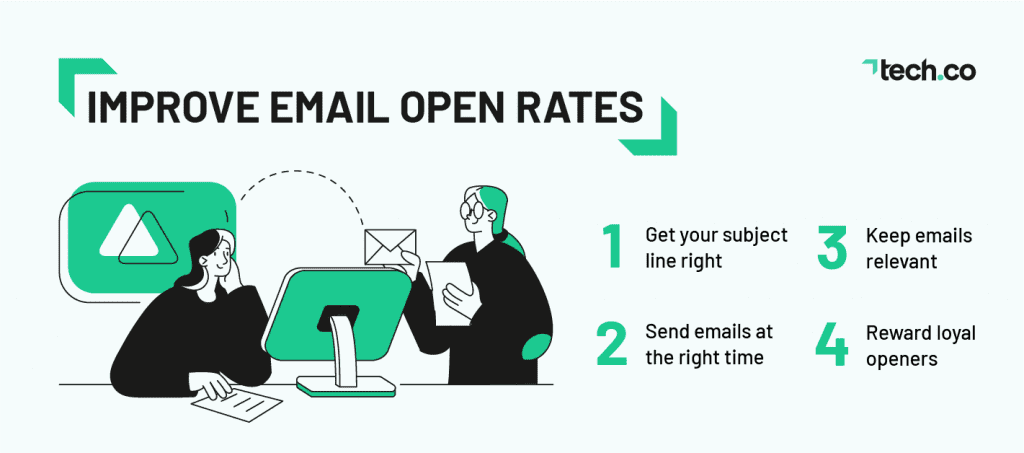You’ve poured your time into a great email campaign, yet the results show an alarmingly low delivery rate, meaning your hard work has gone to waste. With 300 billion emails being sent daily, email is a tough nut to crack. We’ve been advised by e-marketing experts on our top twelve tips to boost your deliverability and open rates to ensure winning campaigns.

1. Collect real emails
Buying emails online sounds like a promising endeavor. But the reality is a lot of the email accounts are spam, bots, or simply inactive – not what you want for winning campaigns. The best type of email addresses belong to real people who have an interest or need in your product or service. Fake emails will have a negative impact on your IP address and see your emails end up in the junk folder.
2. Maintain email list hygiene
It’s easy to ignore undeliverables, but it won’t do you any favours in the long run. Those incorrect or inactive email addresses will taint your reputation and could reduce your deliverability. As for those who are never opening your email, you could consider a re-engagement campaign email to assess whether they should be removed altogether. But, if there is no response still, remove them. Email management is extra work but it’s all worth it to maintain a strong domain reputation and increase deliverability.
3. Authenticate your domain
This simply refers to giving email providers confirmation that you are legitimately sending emails and are who you say you are. Without doing this, the chance of getting your email blocked or filters increases.
Authenticating your domain may sound complicated and technical, but it’s actually pretty straightforward. You should be able to find the authentication section on your email provider which will explain how to do it. Or, a quick google search can help.
4. Maintain proper IP allocation
Your IP address reputation influences how mailbox providers view your domain and whether your emails will make it through to the inbox, so maintaining IP allocation is a crucial consideration.
IP addresses can be dedicated or shared. Dedicated IPs are used by a single domain in which no other company can send from the address. This means you can regain more control over the reputation of your IP address. Shared addresses are used across a pool of users, which is cheaper, but is harder to control your sender reputation.
5. Get rid of barriers to unsubscribe
If you are in Europe, not giving your recipients clear ways to unsubscribe breaches GDPR (General Data Protection Regulation) can result in hefty fines. If not, it is still best practice to provide an unsubscribe feature, as it will come across as unprofessional and irritate your recipients.
Always include an unsubscribe button at the bottom of your email – you can even include a question to find out the most common reasons for unsubscribes, but keep it short and sweet.
6. Keeps emails engaging
To keep your recipients coming back for more, your emails must be engaging. Consider our following tips in this graphic:

7. Include “whitelist me” copy in your emails
Allowing your recipients to press a “whitelist me” prompt in your email gives a positive signal to ISPs that users are engaging with your emails, reducing the chances of them ending up in spam, or other tags/ folders.
8. Consistency is key
Email consistency builds trust, and trust builds relationships. You don’t want your customers to forget about you, but you also don’t want to bombard them with emails. In fact, research has shown that customers look for consistency when determining their loyalty to a brand
Only send out email campaigns when you have something to say or offer and can give a clear call to action – never waste an opportunity with fluff. This could be information about a new product, with a CTA to purchase it, a new blog post you’ve written, or an exclusive offer.
Furthermore, consider constructing an email campaign schedule so you can plan in advance what needs to go out and what’s to come. This will allow you to remain more organised and know what’s coming up in the pipeline.
9. Get your subject line right
47% of recipients use the subject line alone to decide whether or not an email is worth opening, so you want to spend time ensuring it’s as engaging as it can be. A/B testing different subject lines for each campaign can better help inform you for the next time and is usually a feature of email distribution software.
Here are our tips:
- Personalise where possible
- Use humour (occasionally, where possible)
- Keep it short and sweet
- Put your most important word first
- Keep it concise – avoid filler words
- Avoid these spam words
- Experiment with emojis, but don’t overdo it
10. Send emails at the right time
The time and day you send your email may matter more than you think and can be the difference between a 5% and 20% open rate. Research shows between 9 am to 3 pm is generally the best time to send an email, but this is just a guide. You really need to think about where most of your customers reside, their demographics, and the industry. If your customers reside all around the world, it’s worth segmenting them into groups so you can strike at the right time, and again, don’t forget to be continually A/B testing.
11. Keep emails relevant
Don’t send your recipients emails about products they have never demonstrated interest in. It takes 6 seconds to determine whether an email is worth opening or not, so keep it as relevant as possible. Stick to the subject matter in the body and include a relevant CTA. You’ll lose your time-strapped audience if you stray from the point and increase the chances of ending up in the spam folder.
12. Reward loyal openers
If people are opening your emails, then you’ve got an active audience that you can use to your advantage through rewards. After all, it’s easier to sell to existing customers than try and acquire new ones. Target them with special deals and offers through segmenting your lists

There you have our top 12 tips on improving email deliverability and open rates. Your campaigns may have the best content in the word, but they still need to make it through to the recipient. Plus, email providers are wising up to spammy content. Be continually testing and reporting on your campaigns as this is crucial in discovering what works and what doesn’t and building great success.





